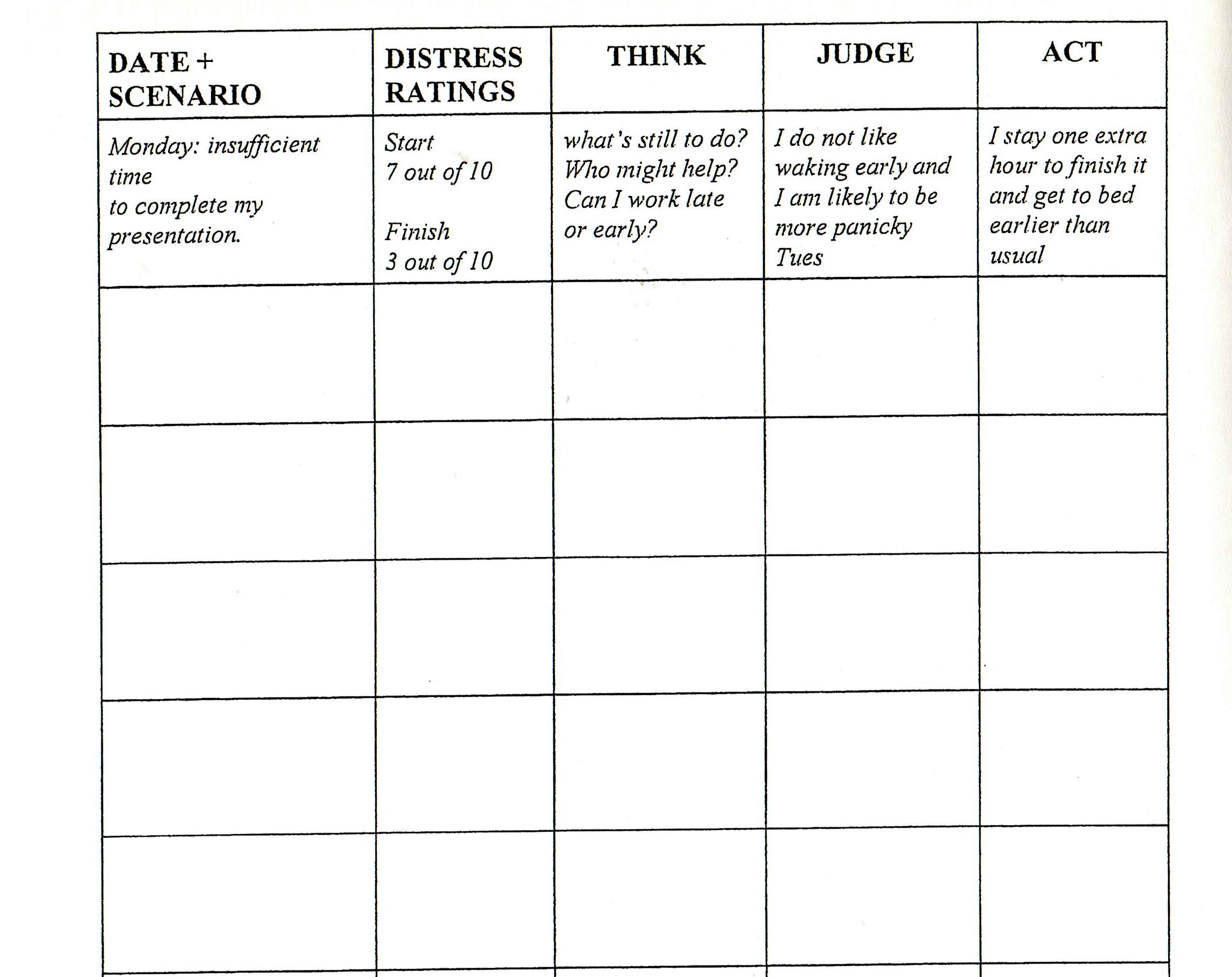Recording the results of therapy is important, but it is not so easy to choose the right one for you. On this page, I include a couple of possibilities.
I do not, myself, keep a diary and – too often – I rely on my memory to notice what is going on. The problem, here, is that I can fool myself easily. My memory does not provide an accurate record of what happens. In my search for meaning, I am adept at moulding the facts to my own convenience or ‘truths’.
For this reason, it is handy to write things down. If you are not keen about this, simply use Post-Its to record the headline facts.
AN EXPERIMENT
Remember something specific that happened yesterday – whether a good or bad experience.
The Record: use a piece of paper to recall:
What happened – in one line.
The emotion(s) you felt at the time. Use the Subjective Unit of Discomfort (SUD) to ‘measure’ the emotion. Give each one a rating from 1 – 10. Zero, for example, would mean no emotion, so 1 is the smallest experience of the emotion and a SUD of 10 is the emotion at the strongest you can recall. You could score anywhere between 1 and 10.
The situation. What were you doing when you started to feeling the emotion?
Who were you with?
What time of day was it, and
Where were you?
In general terms, what was the focus of your thoughts at the time? Only put down the general topic here (e.g. `Thinking about how difficult life is‘).
What precisely was going through your mind should go in the next column.
The automatic thought(s). What thoughts were running through your mind at the time you started to feel bad? Try to record them as accurately as possible, word for word. Some of your thoughts may take the form of images in your mind’s eye, rather than words. Write down exactly what the image was, just as you saw it.
Preferred managing strategies: Notice any strategies you use to avoid or side-step the discomfort. You may notice ‘favourite’ strategies for doing this, e.g. complaining about some-one else in your life.
Associated feelings: thoughts can make us feel bad and commonly generate anxiety, sadness, depression, hopelessness, guilty and anger. What feeling was around on this occasion?
Instead of being overwhelmed by these feelings, you can look them in the eye and learn to use them as a cue for action.
….. now there’s another approach you have available.
AFTER THE EXPERIMENT
Return to your brief note after a few days. How do you recall the event now? Do you review the facts, thoughts and feelings in a different way, now?
When you notice the SUD’s you used at that time, can you notice a change as you review the situation? Do the SUDs-for-now go down, go up or stay the same?
Are you becoming more sensitive to changes in your feelings and the thoughts that spark them off?
You may well find that the same thoughts occur again and again.
Ask yourself what you understood was going on it that situation, as described. What does it tell you about yourself, your situation, your future?
Can you identify a changing meaning associated with the event? You may be able to challenge the old meaning and devise a new one.
EXPERIMENT: PART TWO
As you become more fluent with spotting and recording a negative thought give it a rating out of 7 according to how far you believe it. This is called the Validity of Cognition (VoC) scale. It’s similar to the Subjective Unit of Discomfort (SUD) in that it is a rough-and-ready measure of an experience. The VoC is there to measure the certainty of your belief (rather than feeling and sensation); where 1 is I really do not believe this at all …… and 7 is I really believe this entirely.
Notice that it is possible you will find yourself making excuses not to record. You have hit on something important, so be extra vigilant and make yourself write a summary down.
Another sample record
| What do you feel? How bad is it (0-10)? The SUD | What were you doing and with whom? | What were your thoughts? How far do you believe each one (1 – 7)? |
|
|
|
|
|
|
|
|
As your record grows, you are likely to see patterns in your thoughts and actions. At this point, you can consider some antidotes.
Can you change the situation you are in? That can change our thinking patterns.
Can you observe your mood – practise ‘just noticing’ (3rd para down) – to observe the impact on your mood.
Add in the small, safe experiment of ‘affirmation’ of yourself, e.g. say: “even though I am feeling [this mood – name it specifically], I can still deeply and completely accept myself”. When you repeat this affirmation in your head what changes arise in your thought pattern? ….. even if only to laugh at ourselves!! That’s a difference.
Can you be objective enough to seek out some evidence that supports any negative thought? What would other people say to you about it? Often there can be some sound reason for holding it.
However, follow this step by finding evidence that runs counter to the negative thought. There is usually something to be found to contradict any one thought we are having. Dialectical Behaviour Therapy (DBT) is based on these apparent contradictions. mNote all of them down.
When you look at all the information, and initiate some controlled breathing: what ‘balanced’ view emerges, if any ….. over time?
What impact can these experiments and reflections have on your own Stroke Economy?
Consider: what something a little bit different might I do to re-consider this belief – and my actions – just a little bit differently.
Other leads
Nudging along the scenic route
